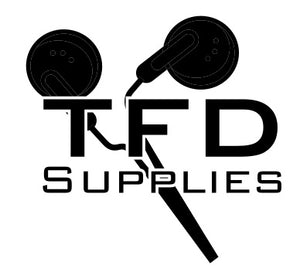Listen
Failure to adapt is often a failure to survive. In the school system, though, the question is often not one of whether adaptation should happen, but rather who should adapt. Being able to answer this question can play a huge role in how effective a school administration will be.
What's become incredibly difficult to determine, though, is what it means to adapt.
Adaptation on a greater level does not mean this kind of short-term or situationally-mandated change. Adaptation, in this case, means making changes in the way a school works to provide system-wide alterations. When most talk about whether schools or students should change, what they're talking about are the changes to the greater framework in which both operate. Adaptation, then, is as much a matter of determining not just a shift in a practical manner, but also a shift in the way philosophical underpinnings that determine how these decisions are made.
As you may imagine, this type of adaptation is hard to accomplish, hard to visualize, and in many cases hard to accept. Even then, it is vital for those who want to ensure the ongoing relevance of education.
It's also important to understand that administrators, students, and teachers alike have been engaged in this delicate balancing act for decades. Teachers have long given students more leeway to adapt during the first days of school, just as students have long been expected to adapt to changes in testing protocols every time they are rolled out. What's being discussed is not something new and is certainly not even something that's being discussed due to radical changes in culture - adaptation has to be discussed because it's always been a vital part of how the educational system has been able to thrive.
Going back to logistics, it's also important to remember that there are some things that a school simply cannot change because doing so is not fiscally responsible or that the student's adaptation would be less disruptive. A school may not offer full vegan lunch options, for example, when doing so would only impact a small group of students who could otherwise be reasonably expected to bring food that meets their own dietary choices. In matters of preference, students should almost always be expected to be the ones who adapt to better fit the school's mission of education for all.
At the same time, there are situations in which the school should change that are not governed by the law. Schools can and should adapt to the world around them, bringing both their rules and their mode of operation more in line with the realities that students experience. Issues ranging from dress code to homework policies should be discussed internally and focus should put not on school traditions or even the viewpoints of the individual educators, but rather how enforcement of these policies will end up influencing the overall educational arcs of the impacted students. Schools should above all else be pragmatic with their regulations, and thus may need to change when rules and regulations no longer serve an educational purpose.
A good example of finding compromise might be on the issue of school dress codes. Students not only have an interest in self-expression, but dress codes can also raise issues of personal identity and might even raise issues about a student's ability to concentrate in class. On the other hand, a school has a duty to reduce distractions and to provide a safe and productive environment for all of its students.
The best solution for all involved would be to find a middle ground. The policy should not be so draconian that it stamps out individuality or causes students discomfort, but not so lax that it invites dress that's outside of the social norms of the community. A middle ground provides students with what they need to succeed while still giving the school the ability to accomplish its own mission.
So, who should adapt? It always depends on the situation. When issues of adaptation occur, a school should always look at what the realistic impact would be of choosing to adapt, whether a student has (or should be encouraged to have) the ability to adapt, and whether compromise is possible or reasonable. Adaptation is a necessity, so learning when it's appropriate is vital to any school that wants to best serve its community.
The Importance of Adaptation
Whether or not the world of education is changing is not up for debate. Every long-time teacher or administrator knows that the world has changed considerably and that it will continue to change. Adaptation is not merely a buzzword at this juncture, but a reality. When adaptation doesn't occur, the systems the educational system can't function.What's become incredibly difficult to determine, though, is what it means to adapt.
What Does it Mean to Adapt?
At a basic level, adaptation means change. In an educational context, though, that change can come in many different shapes. Anyone who has worked in a school for more than a year or two already understands that adaptation happens on a daily basis. Schedules change due to drills and special events. Staffing changes happen due to illnesses or retirements. When the state makes a change to its laws concerning anything from student attendance to standardized testing scores, the school likewise adapts. This kind of a short-term, mandated adaptation is something that everyone can understand and which they tolerate.Adaptation on a greater level does not mean this kind of short-term or situationally-mandated change. Adaptation, in this case, means making changes in the way a school works to provide system-wide alterations. When most talk about whether schools or students should change, what they're talking about are the changes to the greater framework in which both operate. Adaptation, then, is as much a matter of determining not just a shift in a practical manner, but also a shift in the way philosophical underpinnings that determine how these decisions are made.
As you may imagine, this type of adaptation is hard to accomplish, hard to visualize, and in many cases hard to accept. Even then, it is vital for those who want to ensure the ongoing relevance of education.
Assumptions About Adaptation
It's best to get rid of a few misconceptions about this discussion. The first, and perhaps most important, thing to dismiss the concept of a 'winner' and a 'loser' when it comes to who should have to adapt. This is not a competition and this is certainly not a zero-sum game. Whether the school should adapt or student should adapt, the goal is to make a better learning environment for all involved.It's also important to understand that administrators, students, and teachers alike have been engaged in this delicate balancing act for decades. Teachers have long given students more leeway to adapt during the first days of school, just as students have long been expected to adapt to changes in testing protocols every time they are rolled out. What's being discussed is not something new and is certainly not even something that's being discussed due to radical changes in culture - adaptation has to be discussed because it's always been a vital part of how the educational system has been able to thrive.
When Students Should Adapt
Generally speaking, there's some wisdom in assuming that an individual student should be expected to adapt more readily than an entire institution. On an institutional level, this can be considered a matter of logistics - it's easier for a single person to change than it is to change the entire school. On a philosophical level, it's also advantageous because schools do play a role in trying to mold children into educated and responsible adults. It's also incredibly important for students to learn how to be adaptable, as they will rarely be able to expect society as a whole to change due to their whims.Going back to logistics, it's also important to remember that there are some things that a school simply cannot change because doing so is not fiscally responsible or that the student's adaptation would be less disruptive. A school may not offer full vegan lunch options, for example, when doing so would only impact a small group of students who could otherwise be reasonably expected to bring food that meets their own dietary choices. In matters of preference, students should almost always be expected to be the ones who adapt to better fit the school's mission of education for all.
When Schools Should Adapt
There are many situations in which a school should adapt to the student. The easiest situations to understand are those situations in which the adaptation is governed by law. If a student, or a group of students, need a change implemented to ensure a less restrictive learning environment or to give them access to the same tool to success that other students receive, it's only reasonable for the school to make those changes.At the same time, there are situations in which the school should change that are not governed by the law. Schools can and should adapt to the world around them, bringing both their rules and their mode of operation more in line with the realities that students experience. Issues ranging from dress code to homework policies should be discussed internally and focus should put not on school traditions or even the viewpoints of the individual educators, but rather how enforcement of these policies will end up influencing the overall educational arcs of the impacted students. Schools should above all else be pragmatic with their regulations, and thus may need to change when rules and regulations no longer serve an educational purpose.
Finding Compromise
In many cases, there's common ground to be found between students and schools. Finding common ground is not only a good way to make sure that both parties get what they need, but it proves to students that they can thrive within the framework of the school. On the school's part, compromise can help the organization to better coexist with its student body while still ensuring that the lines of communication are open and respected when the rules do need to be enforced. Finding this common ground is almost always the best way to resolve issues of adaptation.A good example of finding compromise might be on the issue of school dress codes. Students not only have an interest in self-expression, but dress codes can also raise issues of personal identity and might even raise issues about a student's ability to concentrate in class. On the other hand, a school has a duty to reduce distractions and to provide a safe and productive environment for all of its students.
The best solution for all involved would be to find a middle ground. The policy should not be so draconian that it stamps out individuality or causes students discomfort, but not so lax that it invites dress that's outside of the social norms of the community. A middle ground provides students with what they need to succeed while still giving the school the ability to accomplish its own mission.
So, who should adapt? It always depends on the situation. When issues of adaptation occur, a school should always look at what the realistic impact would be of choosing to adapt, whether a student has (or should be encouraged to have) the ability to adapt, and whether compromise is possible or reasonable. Adaptation is a necessity, so learning when it's appropriate is vital to any school that wants to best serve its community.







